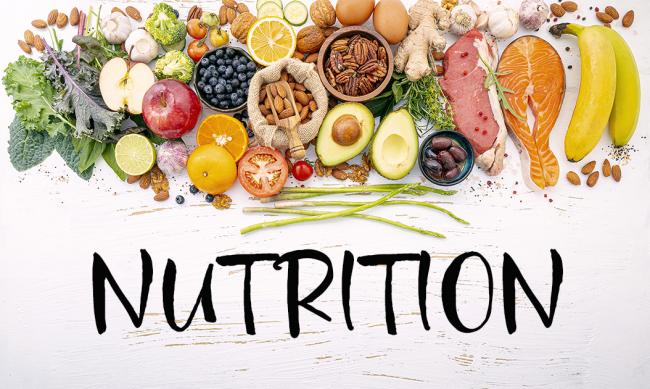When it comes to nutrition, most people overcomplicate things. They chase the latest diet trend, count every calorie, or stress about macros down to the gram, only to end up frustrated, inconsistent, and confused about what’s “healthy.”
At CrossFit Be Someone, we take a simpler and more sustainable approach. Following the CrossFit nutrition prescription, “Eat meat and vegetables, nuts and seeds, some fruit, little starch, and no sugar,” provides the foundation. This timeless principle, supported by nutrition experts like Healthy Steps Nutrition, Precision Nutrition, and EC Synkowski’s 800 Gram Challenge, focuses on building healthy habits around real food, balance, and consistency.
Here’s how to make balanced, performance-boosting meals without the hassle.
1. Start with the CrossFit Nutrition Prescription
The CrossFit prescription is simple because it’s meant to be universal and sustainable. It teaches you to eat whole, unprocessed foods that fuel performance, recovery, and long-term health.
- Eat meat and vegetables: This combination provides protein for muscle repair and growth, plus vitamins, minerals, and fiber to keep your body functioning well.
- Nuts and seeds: These are nutrient-dense sources of healthy fats and add satiety to meals.
- Some fruit, little starch: Fruits provide natural sweetness and antioxidants, while minimizing starch helps regulate blood sugar.
- No sugar: This doesn’t mean you’ll never have dessert again, it means you prioritize foods that nourish you over those that spike and crash your energy.
By following this prescription, you’re already 90% of the way toward a balanced, nutrient-rich diet.
2. Use the Healthy Steps Nutrition “Plate Method”
Healthy Steps Nutrition simplifies meal building with a visual guide called the Plate Method. No scales, tracking apps, or calorie counting required.
Here’s how it works for each meal:
- ½ plate: Non-starchy vegetables (broccoli, spinach, peppers, asparagus, zucchini, etc.)
- ¼ plate: Lean protein (chicken, fish, eggs, lean beef, or tofu)
- ¼ plate: Smart carbohydrates (sweet potatoes, quinoa, rice, oats, or fruit)
- A thumb-size portion: Healthy fat (avocado, olive oil, nuts, or seeds)
This method ensures you’re getting all macronutrients, protein, carbs, and fat, in the right proportions to support performance, recovery, and energy balance.
For example, a quick and balanced lunch might look like this:
- Grilled chicken breast
- Roasted sweet potatoes
- Steamed broccoli
- A drizzle of olive oil
Simple, nourishing, and ready in minutes.
3. Take the “800 Gram Challenge” Approach
EC Synkowski’s 800 Gram Challenge is a game-changer for simplifying nutrition while improving quality. The goal is to eat 800 grams (about 6 cups) of fruits and vegetables per day, any combination, any variety.
You don’t have to eliminate foods; you simply add more high-quality produce to your diet. When you prioritize fruits and vegetables, you naturally crowd out less nutritious options and boost fiber, antioxidants, and micronutrients that improve health and performance.
A simple way to hit your 800 grams:
- Add spinach and peppers to your morning eggs (100g)
- Snack on an apple and some berries mid-morning (200g)
- Include a large salad at lunch (200g)
- Have roasted vegetables with dinner (300g)
By focusing on adding good food, you shift your mindset from restriction to nourishment, and that’s where long-term success happens.
4. Apply Precision Nutrition’s “Hand Portion” Method
If you prefer an easy way to estimate portions, Precision Nutrition’s hand method is foolproof. It’s personalized because it uses your own hand as the measuring tool:
- Protein: 1–2 palm-sized portions per meal
- Carbs: 1–2 cupped handfuls per meal
- Fats: 1–2 thumb-sized portions per meal
- Vegetables: 1–2 fist-sized portions per meal
This method works for any goal, fat loss, performance, or maintenance, and it eliminates the need for tedious food tracking.
For example:
A meal with 1 palm of salmon, 1 fist of mixed vegetables, 1 cupped handful of rice, and 1 thumb of avocado hits the balance perfectly.
5. Keep Meals Simple and Repeatable
The key to long-term success isn’t perfection, it’s consistency. The best nutrition plan is one you can follow, even on busy days.
Try this three-step structure when planning your week:
- Pick 3 proteins, 3 vegetables, and 2 carb sources you enjoy.
- Mix and match throughout the week to keep things fresh.
- Prep ahead by cooking in batches, grilled chicken, roasted veggies, and rice can become multiple different meals.
Example combos:
- Chicken + broccoli + sweet potatoes
- Ground beef + peppers + rice
- Salmon + asparagus + quinoa
You don’t need a fancy recipe book to eat well, just a plan that fits your lifestyle.
6. Focus on Progress, Not Perfection
Nutrition isn’t all or nothing. You don’t need to eat perfectly every day to see progress. Instead, focus on improving one habit at a time, drinking more water, adding an extra serving of vegetables, or eating protein with every meal.
Healthy Steps Nutrition and Precision Nutrition both emphasize that small, consistent actions lead to the biggest changes over time.
Remember:
- Don’t skip meals, it leads to overeating later.
- Stay hydrated, water supports digestion and energy.
- Plan for flexibility, enjoy social events without guilt.
7. Fuel Your Performance and Life
When you nourish your body with whole, balanced meals, everything improves, your workouts, your energy, your focus, and your recovery.
CrossFit athletes know the power of consistency inside the gym. Apply that same mindset to your nutrition outside the gym. You don’t need extreme restrictions or complex plans, just real food, smart habits, and patience.
Start today:
- Build your plate with protein, veggies, carbs, and healthy fats.
- Hit 800 grams of fruits and vegetables.
- Keep your meals simple, colorful, and consistent.
Balanced nutrition doesn’t have to be hard, it just has to be practiced. Once you master that, you’ll not only look and feel better, but you’ll perform better too, in the gym and in life.








